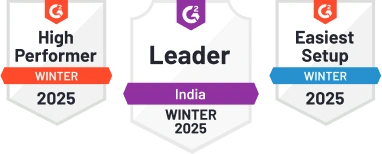Grab a chance to avail 6 Months of Performance Module for FREE
Book a free demo session & learn more about it!
-
Will customized solution for your needs.
-
Empowering users with user-friendly features.
-
Driving success across diverse industries, everywhere.
Grab a chance to avail 6 Months of Performance Module for FREE
Book a free demo session & learn more about it!
Superworks
Modern HR Workplace
Your Partner in the entire Employee Life Cycle
From recruitment to retirement manage every stage of employee lifecycle with ease.



Seamless onboarding & offboarding
Automated compliance & payroll
Track performance & engagement
Application Database Administrator KRA/KPI
- Key Responsibility Areas (KRA) & Key Performance Indicators (KPI) for Application Database Administrator
- 1. Database Management
- 2. Performance Tuning
- 3. Security and Compliance
- 4. Data Migration and Integration
- 5. Backup and Recovery Management
- 6. Capacity Planning
- 7. System Monitoring and Alerts
- 8. Documentation and Knowledge Sharing
- 9. Stakeholder Communication
- 10. Continuous Learning and Development
- Real-Time Example of KRA & KPI
- Real-World Example: Database Administrator at XYZ Corp
- Key Takeaways
Key Responsibility Areas (KRA) & Key Performance Indicators (KPI) for Application Database Administrator
1. Database Management
KRA: Responsible for managing and optimizing databases to ensure efficient data storage and retrieval for applications.
Short Description: Efficient database management for application performance.
- Database uptime percentage
- Query response time
- Database growth rate
- Data backup and recovery time
2. Performance Tuning
KRA: Enhancing application performance through database query optimization and indexing.
Short Description: Improving application speed and efficiency through performance tuning.
- Average query execution time
- Index hit ratio
- Application response time
- Database lock contention rate
3. Security and Compliance
KRA: Ensuring database security measures are in place and compliance with data protection regulations.
Short Description: Maintaining data security and regulatory compliance.
- Security breach incidents
- Regulatory audit outcomes
- Data encryption implementation rate
- Access control policy adherence
4. Data Migration and Integration
KRA: Facilitating seamless data migration and integration processes between different systems.
Short Description: Efficient data movement and integration across platforms.
- Data transfer success rate
- Data mapping accuracy
- Integration project timelines met
- Data validation error rate
5. Backup and Recovery Management
KRA: Implementing robust backup and recovery strategies to safeguard data against loss or corruption.
Short Description: Ensuring data resilience through backup and recovery solutions.
- Backup success rate
- Recovery time objective (RTO)
- Data loss incidents
- Backup storage utilization
6. Capacity Planning
KRA: Forecasting resource requirements and scaling database infrastructure to meet application demands.
Short Description: Proactive resource planning for sustainable application growth.
- Resource utilization efficiency
- Scalability assessment accuracy
- Capacity expansion lead time
- Performance under peak load conditions
7. System Monitoring and Alerts
KRA: Monitoring database systems in real-time to detect and respond to performance issues promptly.
Short Description: Continuous system monitoring for proactive issue resolution.
- Alert response time
- Incident resolution time
- System availability percentage
- Performance degradation incidents
8. Documentation and Knowledge Sharing
KRA: Maintaining comprehensive documentation and sharing knowledge to enhance team efficiency.
Short Description: Knowledge management for team collaboration and growth.
- Documentation completeness score
- Knowledge sharing participation rate
- Training session feedback ratings
- Process improvement suggestions implemented
9. Stakeholder Communication
KRA: Engaging with stakeholders to understand requirements and provide database solutions effectively.
Short Description: Effective communication for stakeholder satisfaction.
- Stakeholder feedback ratings
- Project requirement understanding accuracy
- Timely solution delivery rate
- Stakeholder recommendation rate
10. Continuous Learning and Development
KRA: Keeping up-to-date with industry trends and technologies to enhance personal and professional growth.
Short Description: Lifelong learning for professional advancement.
- Training hours completed
- Certification achievement rate
- Implementation of new technologies
- Professional growth goal attainment
Real-Time Example of KRA & KPI
Real-World Example: Database Administrator at XYZ Corp
KRA: Implementing database performance tuning strategies to reduce query response time.
- KPI 1: Decrease in average query execution time from 5 seconds to 2 seconds.
- KPI 2: Increase in index hit ratio from 70% to 90%.
- KPI 3: Reduction in application response time by 20%.
- KPI 4: Decrease in database lock contention rate by 15%.
This led to improved application performance, user satisfaction, and efficient utilization of database resources.
Key Takeaways
- KRA defines what needs to be done, whereas KPI measures how well it is done.
- KPIs should always be SMART (Specific, Measurable, Achievable, Relevant, Time-bound).
- Regular tracking and adjustments ensure success in Application Database Administrator role.




